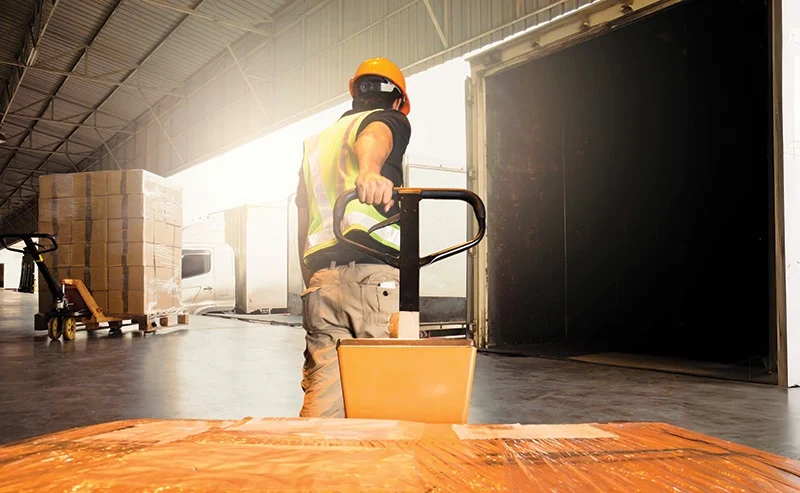By Susan Bloom | Published In September 2016
Article from: Electrical Contractor Magazine
Prefabricated lighting is an increasingly popular strategy in today’s competitive construction and upgrade market. It can help save electrical contractors (ECs) time and money in the field while offering greater control over the product and installation process. Below, experts share best practices in prefabricated lighting, when to engage in it, and the opportunities it offers to boost an EC’s bottom line and optimize productivity.
A value-added practice
“Prefabricated lighting generally involves the alteration of lighting fixtures at a contractor’s warehouse for easier installation on the job site,” said Stephen Malave, operations manager at the Perth Amboy, N.J., branch of Facility Solutions Group, a national provider of lighting/electrical products and contractor services. “For example, we prefabricate lighting when a project requires a special mounting of lighting fixtures or if we’re adding sensors to fixtures.”
According to Malave, the benefit of any type of prefabrication is on-the-job cost and time savings.
“You can make any necessary alterations to the lighting fixtures in a controlled environment at a lower cost using an apprentice, which also helps with apprentice training in that it can familiarize them with different types of fixtures and mounting hardware,” he said. “All contractors are always looking for ways to help cut costs, and prefabrication allows them to do that while providing training at the same time.”
Jon Zelinsky is director of contractor marketing for Philips Lighting, an Andover, Mass.-based manufacturer focused on understanding the challenges faced by ECs and translating them into key innovations and activities that create value and drive new business opportunities.
“Prefab lighting typically refers to the contractor performing some of the installation activities prior to reaching the job site, like adding whips, prewiring, adding control modules, or even preprogramming the controls for the fixtures,” he said. “Overall, prefab lighting solutions can help a contractor manage the installation more effectively and efficiently in an ideal environment. In a shop, for instance, the work can be done on work benches in a more comfortable environment with all the right tools and information instead of in a dynamic field environment. Performing these customization or configuration tasks ahead of time [e.g., before the fixture is in the ceiling] and almost in an ‘assembly line’ format is more efficient and can, therefore, save the contractor significant time in addition to avoiding any variances that may occur in the field.”
Paul Kosmides, president of OlympiaTech Electric, a third-generation, Plymouth, Minn.-based firm with expertise in design/build commercial and industrial projects, discussed how his company tackles prefab lighting.
“At our premises, we have tables set up for cutting and terminating so that we can oversee this process in our shop rather than in the uncontrolled field,” he said.
Rick Henry, branch manager for the Dublin, Calif.-based branch of the nearly 90-year-old Collins Electrical Co. Inc., described how his firm is successfully applying prefabricated lighting activities on a current job.
“One particular project Collins Electrical is working on is the large tenant improvement of an existing space in California for a major auto manufacturer, which will house the crash-testing system, training, and call center for their new model coming out next year,” Henry said. “The building has 35–38-foot ceilings, and the owner wants linear and 2-by-4 light fixtures to hang at 12 feet and 21 feet. This is a very fast-track project that will require approximately 60,000 man-hours and a six-month schedule. In order for us to complete this project on time, we have to come up with ways to install these fixtures so that they hang between 23 feet and 14 feet from the ceiling in an anti-sway manner. It’s paramount that, while our crews are installing pipe and wire on-site, our design and prefabricating team is working in parallel with our on-site crews to prefabricate these and all other light fixtures on the project from our Stockton, Calif., facility to reduce our installation window and decrease our on-site crew needs.”
A great opportunity (under the right circumstances)
While savvy contractors are already engaging in the practice as job specifications and economics dictate, prefab lighting could become the norm before long.
“More and more these days, the delivery time of projects is reduced in order for the owner to occupy and utilize their space faster, which creates many challenges for electrical contractors,” Henry said. “Prefabricated lighting helps offset these challenges and reduce stress by enabling contractors to operate in parallel with crews doing on-site work, reduce labor costs and manpower requirements, and ease any schedule completion concerns.”
All contractors are always looking for ways to help cut costs, and prefabrication allows them to do that while providing training at the same time.
—Stephen Malave, Facility Solutions Group
Malave said using prefab on any part of a project is often a good choice.
“When you have a project with a repetitive scope of work, prefabrication allows you to quality-control the product at your warehouse and ensure that it’s being delivered to the job site ready to be installed without modification,” he said. “As a result, most contractors will prefab any parts of a project that they can.”
At this point, there’s no definitive script or right and wrong methods for prefab lighting.
“This allows creative people to come up with innovative ideas in a ‘think tank’ environment to achieve a goal and solve both current and future challenges,” Henry said.
Kosmides said the entire channel is already demonstrating a range of creative approaches to the prefab process.
“Distributors are increasingly understanding that job site space is limited/valuable and can get crowded, which means that a contractor will either have to create or rent space or else the materials can jam up the job site,” he said. “Some of our distributors are taking some of these concerns off our hands by storing materials for us or else taking lighting products out of their cardboard, disposing of the packaging, and delivering the product right to the appropriate floor of the building so that our team can just handle and install it. It’s a service we pay for, but it’s worth it for us to let another firm’s lower-cost employees prep these lighting fixtures for us.”
Kosmides also said some general contractors are coordinating central sites of prefab activity for use by numerous specialty tradespeople on a project—such as ECs, plumbers, etc.—so that complete rooms or bathrooms involving a variety of systems can be prepared in a controlled setting, then simply placed on a truck’s air rollers and rolled into a building.
Kosmides recommends that contractors analyze the material and labor cost associated with each task to determine if the economics support prefabricating the lighting.
“Based on labor and warehousing costs, these approaches can increase efficiency and cost competitiveness and help improve the delivery model,” he said.
Also, more distributors are bringing all of a job’s required materials on-site in a trailer to provide an on-the-job stockroom.
Field notes
Below, experts share some tips and best practices when it comes to successful lighting prefabrication.
Choose your projects wisely: Malave said contractors should analyze each opportunity to determine if it’s a good fit for prefab lighting.
“Anytime a contractor sees the cost savings benefit of prefabrication for a particular project, they tend to want to do it for everything and that can be hurtful to productivity,” he said. “Prefabrication should only be used in situations that make sense. At FSG, we review all of our projects and analyze whether it makes sense for us to prefab. For example, there aren’t tremendous cost savings for prefabricating 10 fixtures, as any potential on-site cost savings will be lost setting up the prefab area in the warehouse.”
Kosmides recommends that contractors analyze the material and labor cost associated with each task to determine if the economics support prefabricating the lighting.
“In cases where you can work with the manufacturer to prepare prefabricated lighting to your specs, you may pay more for that product but it will save on labor in the field because you don’t have to splice wires at every light box and junction or pull separate wires; it enables the fixtures to be plug-and-play,” Kosmides said. “You really have to evaluate each situation and find the balance between material and labor costs to determine whether prefabricated lighting will add value to the whole process and bottom line.”
Best bets: “Bigger jobs tend to offer more opportunity for prefabricated lighting because they involve more volume and more time to plan,” Kosmides said. “From our experience, the best opportunities for prefab lighting involve fast-moving jobs in warehouses, distribution centers and large commercial facilities that involve repetitive installations and/or where conditions are unique, such as in high-ceiling applications that can put installers in precarious situations. In those cases, the faster you can mount the lights, the better.”
Henry agreed and said the best projects for prefab are repetitive- installation types such as multifamily, retail and housing.
Meanwhile, Zelinsky said, “Projects involving controls that require additional wiring or programmable features are ideal for prefab activities.”
Communicate: Clear communication is one of the keys to successful prefabrication.
“The most important thing to do is communicate effectively,” Zelinsky said. “Understanding how prefab activities can minimize the impact on a customer is also critical, and this can be especially true if there are aggressive time restraints or on-site coordination issues that must be addressed, either with the customer or the other trades. Communicate with your suppliers and partners and make sure that any project changes are coordinated.”
Communication should be a priority from very early in the process.
“Work with your manufacturer reps and distributors to find creative solutions and start early,” Kosmides said. “Because we often stay in our own silos, we haven’t always thought of the different and innovative ways in which we can work with our fellow channel members. Don’t try to go it alone. Clear communication is very important, whether it be with your manufacturers, employees or other channel members.”
Embrace the opportunity: Contractors should capitalize on the opportunities that prefabricated lighting offers.
“As product options have become more complex, it’s extremely beneficial for contractors to configure at least some of the details and options prior to arriving on-site for the actual install,” Zelinsky said. “A quicker and more efficient overall process allows for significant time and money savings and enables contractors to complete the job faster so they can move on to the next project.”

![lighting_invention_testing_factory_iStock_000089973769-[Converted]_0](https://www.collinselectric.com/wp-content/uploads/2020/04/lighting_invention_testing_factory_iStock_000089973769-Converted_0.jpg)

